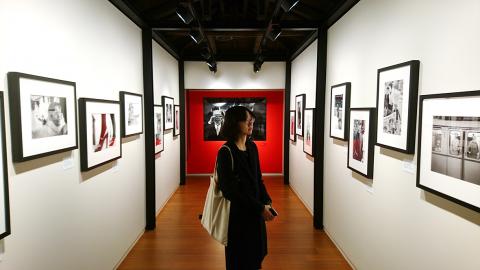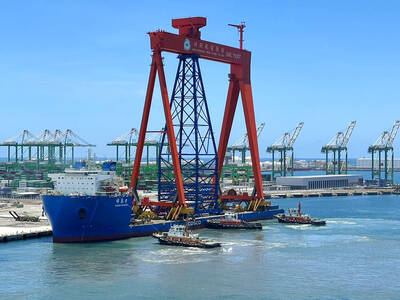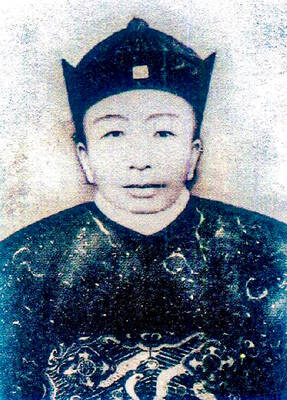A compact, but well-chosen selection of work by Paris-based photography icon Frank Horvat is currently on view in a show titled Frank Horvat — A Twentieth Century Fashion Photography Giant (20世紀時尚影像巨擎—Frank Horvat 攝影展).
Born in Italy to Jewish parents of different nationalities, Horvat started with documentary photography in the 1950s, producing often superbly composed and people-focused snapshots that make great use of the versatility of black-and-white film under natural lighting.
He continued to do so into the 1990s, switching to color and to digital and Photoshop. However, he is best known for his early fashion photography, starting with pioneering stylish monochrome pictures of high fashion in the streets (and metro) of the French capital while on assignment for fashion magazines. The work on display is mainly from the early 1960s.

Photo: Shir Bashi
Sometimes visibly staged and other times infused with purposeful spontaneity, the photographer presents models wearing haute couture and pret-a-porter, using fresh angles and sometimes successfully deceiving the viewer into taking the image for an everyday scene from “Paris reality.”
The exhibition has a minimalist setup: The photographs are original prints, well-lighted and well-presented, and the selection is good considering space limitations, but more explanation would help to contextualize Horvat’s very diverse oeuvre. Color photographs are notably absent, even though some work from the 1970s are included.
For more information, visit: www.facebook.com/events/705627163170214/
■ Leica Gallery and Store, 3, Lane 6, Qingtian Street, Taipei City (台北市青田街6巷3號),
■ Until Jan. 23. Open daily from 11am to 7pm until Jan. 23
■ Admission is free

The canonical shot of an East Asian city is a night skyline studded with towering apartment and office buildings, bright with neon and plastic signage, a landscape of energy and modernity. Another classic image is the same city seen from above, in which identical apartment towers march across the city, spilling out over nearby geography, like stylized soldiers colonizing new territory in a board game. Densely populated dynamic conurbations of money, technological innovation and convenience, it is hard to see the cities of East Asia as what they truly are: necropolises. Why is this? The East Asian development model, with

This is a deeply unsettling period in Taiwan. Uncertainties are everywhere while everyone waits for a small army of other shoes to drop on nearly every front. During challenging times, interesting political changes can happen, yet all three major political parties are beset with scandals, strife and self-inflicted wounds. As the ruling party, the Democratic Progressive Party (DPP) is held accountable for not only the challenges to the party, but also the nation. Taiwan is geopolitically and economically under threat. Domestically, the administration is under siege by the opposition-controlled legislature and growing discontent with what opponents characterize as arrogant, autocratic

June 16 to June 22 The following flyer appeared on the streets of Hsinchu on June 12, 1895: “Taipei has already fallen to the Japanese barbarians, who have brought great misery to our land and people. We heard that the Japanese occupiers will tax our gardens, our houses, our bodies, and even our chickens, dogs, cows and pigs. They wear their hair wild, carve their teeth, tattoo their foreheads, wear strange clothes and speak a strange language. How can we be ruled by such people?” Posted by civilian militia leader Wu Tang-hsing (吳湯興), it was a call to arms to retake

When Lisa, 20, laces into her ultra-high heels for her shift at a strip club in Ukraine’s Kharkiv, she knows that aside from dancing, she will have to comfort traumatized soldiers. Since Russia’s 2022 invasion, exhausted troops are the main clientele of the Flash Dancers club in the center of the northeastern city, just 20 kilometers from Russian forces. For some customers, it provides an “escape” from the war, said Valerya Zavatska — a 25-year-old law graduate who runs the club with her mother, an ex-dancer. But many are not there just for the show. They “want to talk about what hurts,” she